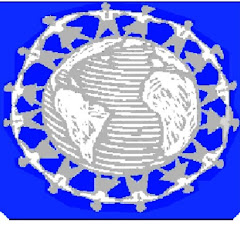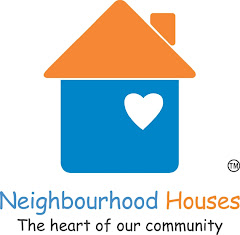NEIGHBOURHOOD HOUSE & LEARNING CENTRE SECTOR MODEL
The Neighbourhood House and Learning Centre (NH&LC) sector is made up of three integrated components:
• The Association of Neighbourhood Houses and Learning Centres, a peak body organisation that represents, supports and coordinates the sector;
• Neighbourhood House Networks, which exist at the community, regional and municipal levels;
• Neighbourhood Houses and Learning Centres, which are community-owned and managed organisations that provide or host a range of programs and activities for their local Community.
The NH&LC style of practice is facilitative, developmental, and fundamentally relies on strong and inclusive relationships particularly within each House or Centre, but also with the wider community.
The sector is supported by the Department of Human Services (DHS) and the Adult Community and Further Education Board (ACFE), as well as by various local Councils. Selfgenerated funds and student/volunteer contributions are also an important source of support for Houses and Centres.
Delivery of universal services and programs is only part of the work undertaken by the 350+ Neighbourhood Houses and Learning Centres in Victoria. Indeed, it would be impossible to deliver such services and programs without the considerable effort that is put into community development and the operation of the organisational structure. Current funding levels do not recognise that the infrastructure developed by a House or Centre is a crucial community asset that can be immediately tapped into when responding to local opportunities, needs, problems or emergencies. This has limited the potential for growth in the NH&LC sector.
OUTCOMES of the NH&LC SECTOR MODEL
The NH&LC sector clearly contributes to the community building directions articulated by Governments at the Local, State and Federal level. NH&LC sector activities contribute to community building outcomes at two levels.
1 Individual Outcomes
Social Wellbeing
• Emotional wellbeing
• Physical wellbeing
Human Capital
• Literacy & language
• New knowledge & skills
• Lifelong learning
• Command over goods & services
Social Capital
• Social connections & networks
• Social participation
• Active citizenship
Economic
• Pathways into further education
• Pathways into employment
• Self-sufficiency
• Income generation
2 Community Outcomes
Social
• Building & sharing community resources
• Community interaction
• Organisational synergies, connections & partnerships
• Community activism
• Empowerment & inclusion
• Social cohesion
Economic
• Employment advocacy, referral & placement
• Innovation & business development
• Savings in health costs
• Savings in social & economic support
Environmental
• Environmental sustainability
• Savings in environmental costs
The Neighbourhood House and Learning Centre (NH&LC) sector is made up of three integrated components:
• The Association of Neighbourhood Houses and Learning Centres, a peak body organisation that represents, supports and coordinates the sector;
• Neighbourhood House Networks, which exist at the community, regional and municipal levels;
• Neighbourhood Houses and Learning Centres, which are community-owned and managed organisations that provide or host a range of programs and activities for their local Community.
The NH&LC style of practice is facilitative, developmental, and fundamentally relies on strong and inclusive relationships particularly within each House or Centre, but also with the wider community.
The sector is supported by the Department of Human Services (DHS) and the Adult Community and Further Education Board (ACFE), as well as by various local Councils. Selfgenerated funds and student/volunteer contributions are also an important source of support for Houses and Centres.
Delivery of universal services and programs is only part of the work undertaken by the 350+ Neighbourhood Houses and Learning Centres in Victoria. Indeed, it would be impossible to deliver such services and programs without the considerable effort that is put into community development and the operation of the organisational structure. Current funding levels do not recognise that the infrastructure developed by a House or Centre is a crucial community asset that can be immediately tapped into when responding to local opportunities, needs, problems or emergencies. This has limited the potential for growth in the NH&LC sector.
OUTCOMES of the NH&LC SECTOR MODEL
The NH&LC sector clearly contributes to the community building directions articulated by Governments at the Local, State and Federal level. NH&LC sector activities contribute to community building outcomes at two levels.
1 Individual Outcomes
Social Wellbeing
• Emotional wellbeing
• Physical wellbeing
Human Capital
• Literacy & language
• New knowledge & skills
• Lifelong learning
• Command over goods & services
Social Capital
• Social connections & networks
• Social participation
• Active citizenship
Economic
• Pathways into further education
• Pathways into employment
• Self-sufficiency
• Income generation
2 Community Outcomes
Social
• Building & sharing community resources
• Community interaction
• Organisational synergies, connections & partnerships
• Community activism
• Empowerment & inclusion
• Social cohesion
Economic
• Employment advocacy, referral & placement
• Innovation & business development
• Savings in health costs
• Savings in social & economic support
Environmental
• Environmental sustainability
• Savings in environmental costs

